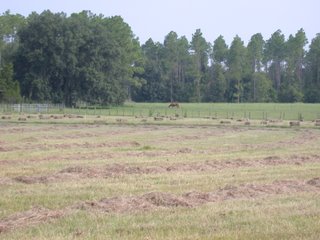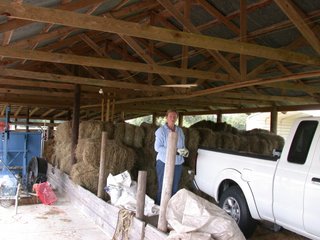
Well, at least while the rain holds off.
The forecast at midweek last week was for rain Wednesday followed by clear dry weather until at least today.
It did indeed rain Wednesday, but from then it was cloudy most of the day and even a bit threatening in the late afternoons. But here’s the thing, no actual rain.

This set up a rare occurrence here on the A3 farm, hay that gets from the field to the barn without getting rained on at all.
I cut two paddocks, one Thursday evening and one Friday evening.
I raked them both up on Saturday. One was bailed Saturday the other Sunday.

We loaded it all in the barn Sunday, the first batch early, the second batch in the late evening.
It is a bit easier to work outside now that the high temperatures for the day is just in the high eighties.
That’s about ten degrees cooler than it has been. Morning and evenings are really quite pleasant.
 I cut about five more acres of hay Wednesday and Thursday evenings, raked it Friday, and baled it up on Saturday.
I cut about five more acres of hay Wednesday and Thursday evenings, raked it Friday, and baled it up on Saturday. By 8:30 or so Saturday it was all in the barn.
By 8:30 or so Saturday it was all in the barn.




